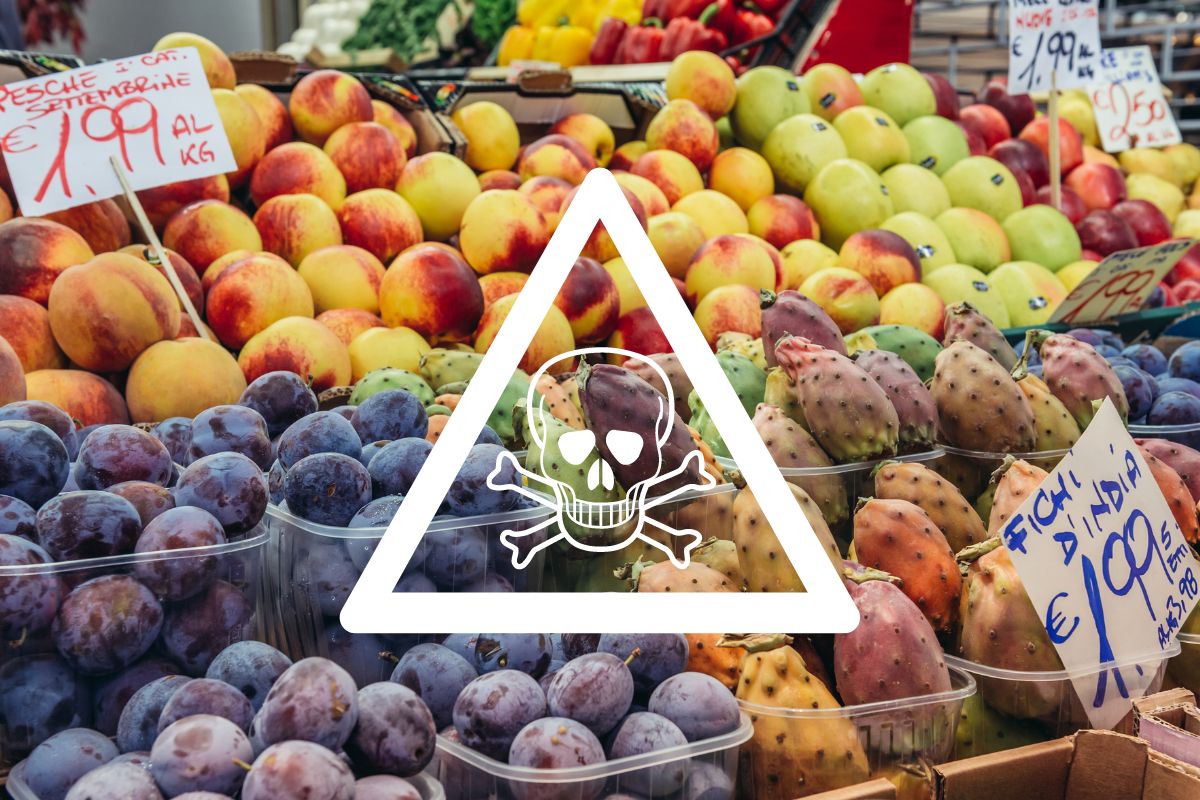Contamination has tripled in ten years and some fruits are particularly affected by the problem

@Canva/123rf
In the European Union, the increasing presence of perfluoroalkyl substances (PFAS) in agricultural crops, particularly in non-organic fruits and vegetables, is becoming a glaring issue. A recent study by Pan Europe has uncovered that such contamination stems from the addition of PFAS to the pesticides used in agriculture. As a result, through fruits and vegetables, we are exposed not only to a cocktail of pesticides but also to the PFAS they contain.
Typically, when we think of PFAS, our minds might jump to non-stick pans (as we’ve discussed in a recent article), but often we underestimate that these substances, known in the US as “forever chemicals” for their persistence in the environment, are also used in food crops.
As Pan Europe reminds us:
“The per- and polyfluoroalkyl substances, or PFAS, known as ‘forever chemicals’ due to their exceptional persistence, are now one of the biggest chemical risks to human health and the environment. They pollute water resources and accumulate in soil, food crops, and living organisms, including humans. The limited evidence available indicates a range of human health and environmental effects related to exposure. Our report shows that European agriculture contributes to this PFAS legacy.”
The Pan Europe study specifically focused on the use of 37 active substances containing PFAS in the cultivation of non-organic fruits and vegetables in Europe, substances not mentioned on pesticide labels. Thus, farmers are often unaware of what the products they spray on their lands truly contain.
The research analyzed official pesticide residue monitoring data in the EU from 2001 to 2021, highlighting a tripling of contamination levels over a decade. Specifically, it found residues of 31 PFAS pesticides in fruits and vegetables (the most common being the fungicide fluopyram, the insecticide flonicamid, and the fungicide trifloxystrobin).
Non-organic fruit shows higher levels than vegetables, with 20% of the analyzed fruit containing a combination of PFAS pesticide residues.
The most contaminated fruit by PFAS
Certain varieties have been found to be more contaminated by PFAS. The negative record for the year 2021 includes:
- Strawberries (contamination percentage 37%)
- Peaches (contamination percentage 35%)
- Apricots (contamination percentage 31%)
These varieties often contained cocktails of three or four different PFAS in a single fruit, as in the case of strawberries.
In 2021, the Netherlands, Belgium, Austria, Spain, and Portugal produced the most frequently contaminated fruits and vegetables. Among the importers, Costa Rica, India, South Africa, Colombia, and Morocco contributed most to PFAS contamination.
What are the risks
Although most of the residues detected fall within the maximum residue limits (MRLs), concerns persist due to the cocktail effect, i.e., the combined exposure to various chemicals. The toxicity of individual PFAS is widely documented, linked to health harms such as endocrine disruption, carcinogenesis, and genotoxicity, but little is yet known about the potential effects of a toxic substances cocktail.
As a result, Pan Europe emphasizes the urgency of banning the use of PFAS pesticides to protect the health of the European population, with particular attention to the most vulnerable groups such as pregnant women, infants, and children.
Experts also remind us that:
“PFAS pesticides are not absolutely necessary for growing crops. They are an easily avoidable source of PFAS pollution. The maintenance of PFAS pesticide approvals in the EU leads to the intentional exposure of citizens to PFAS residues day after day, despite the medical community’s calls for complete elimination. In 2020, the EU committed to banning all non-essential PFAS in Europe, but PFAS pesticides were excluded from the proposal on the false assumption that they are already sufficiently regulated by EU pesticide law.”
Report here
Source: Pan Europe
